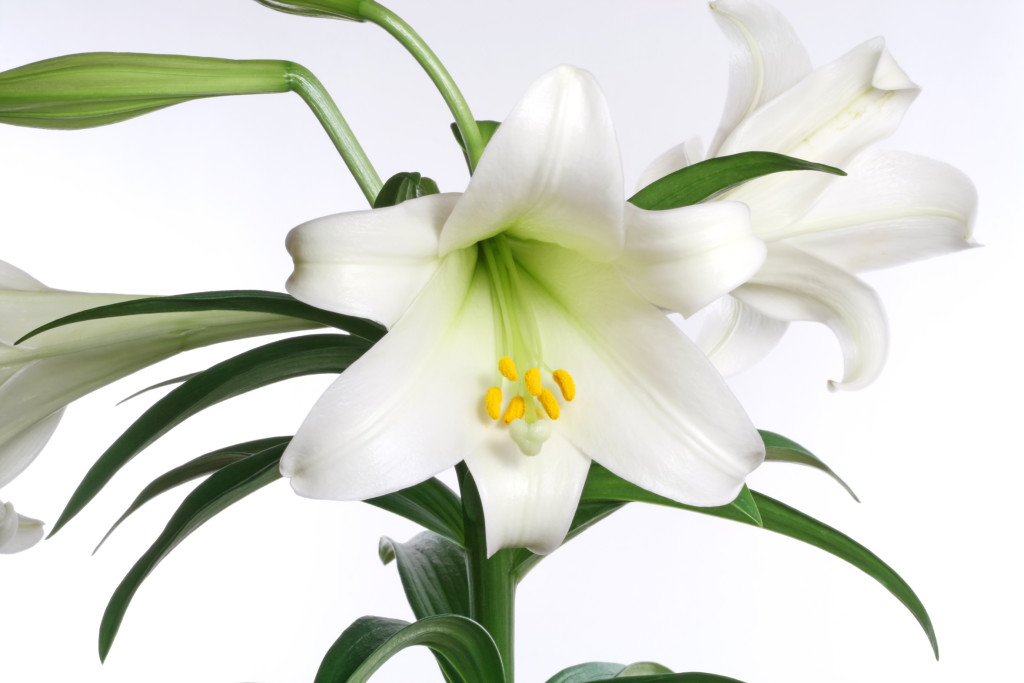
Remove the yellow anthers to keep Easter lily flowers blooming longer. © Julianna Olah/Fotolia.com
Next Sunday is Easter and the plant of the holiday is a lily, sometimes dubbed the “white-robed apostle of hope.”
Why lilies are associated with Easter is the stuff of legends, and maybe faith. One is that it’s a reference to the “lilies of the field” in Christ’s Sermon on the Mount. Another legend says lilies sprouted from the ground where Christ’s tears fell while he hung on the cross. Many religious denominations embrace the tradition by filling their sanctuaries with the white lilies.
The fact that we have blooming lilies this time of year is not quite a miracle, but a process that tricks Mother Nature. Easter lilies (Lilium longiflorum) normally bloom in summer.
Use caution with Easter lilies if you have cats.
In an environment where cold, heat, water, fertilizer and light are strictly controlled, about 40,000 Easter lilies are forced into bloom at Crossroads Greenhouse on Kentucky Avenue, a facility heated by methane gas harvested from the Indianapolis’ South Side Landfill.
When shopping for lilies, look for a symmetrical plant with at least four buds in various stages of development, said Kim Holden, landscape and greenhouse sales manager at Heartland Growers, the Westfield, Indiana, company that owns and operates Crossroads Greenhouse.
At home, place the lily plant in a cool, bright area, but away from hot and cold drafts. The soil should be evenly moist, but not sopping wet. Temporarily remove any decorative cover from the pot to allow water to run free from drainage holes. Don’t let the pot sit in water. There’s no need to fertilize the plant.
“Pinching out the (yellow) anthers from the center of the flower makes the bloom last longer,” Holden said. Removing the anthers also takes away the pollen, which can stain tablecloths and clothing.
Unlike that other big holiday plant, the poinsettia, an Easter lily is winter hardy throughout Indiana, making it a beautiful, fragrant, trumpet-shaped flower in the garden them. With a nice layer of mulch for winter protection, the Easter lily should bloom the following summer.
Between now and transplanting the lily outdoors, remove the spent flower, but leave the stalk and leaves intact. Water when the soil surface feels dry, and begin a fertilizing program to help replenish the bulb.
In mid May, transplant the lily to a sunny area with well-drained, organically rich soil. If concerned about drainage, mound up a good quality compost about 6-8 inches high and plant the lily there. Remove the stalk after it turns yellow. Just like their spring counterparts, summer bulbs need their foliage to replenish the nutrients needed for next year’s bloom.